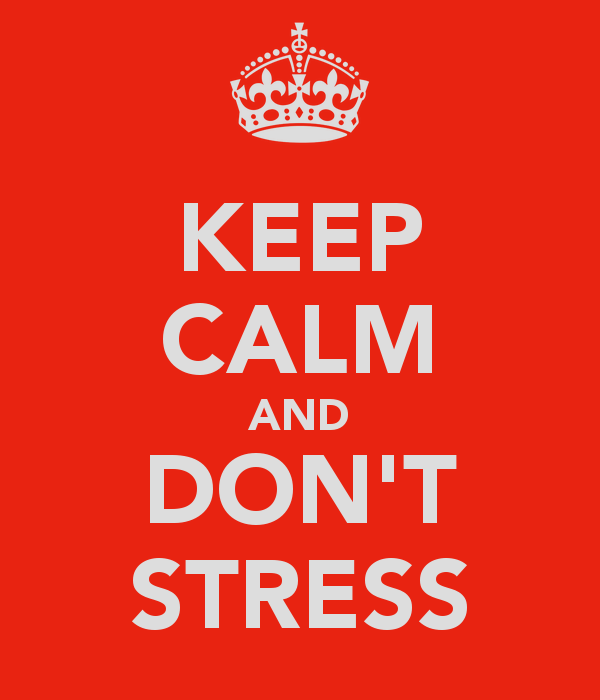 “Stress” can be defined as a physical, mental or emotional response to events that cause bodily or mental tension. It comes from a situation or a thought that makes you feel frustrated, nervous, anxious or angry. Stress can be a good thing and it can also be harmful.
“Stress” can be defined as a physical, mental or emotional response to events that cause bodily or mental tension. It comes from a situation or a thought that makes you feel frustrated, nervous, anxious or angry. Stress can be a good thing and it can also be harmful.
Ideally, you want to limit your exposure to harmful stress and when it is present, learn to manage in a healthy way.
Common sources of stress include:
- Having too much to do and no time to keep up
- Having no time for yourself
- Having few/no opportunities for personal development
- Feeling like you have little control over your decisions
- Personal concerns – family, financial, health, etc.
- Environmental issues – noise, lack of space, disorganization
Common symptoms of stress include:
- Cognitive (memory problems, inability to concentrate, continuous worry, racing thoughts)
- Emotional (feeling down, overwhelmed, irritable, inability to relax)
- Physical (excessive perspiration, chest pains/elevated heart rate, frequent colds/illness, nausea, dizziness or headaches)
- Behavioral (increase /decrease in appetite, nervous habits, difficulty/irregular sleeping, excessive use of alcohol, cigarettes or drugs)
I’ve recently finished reading In the Realm of Hungry Ghosts (Close Encounters with Addiction) by Dr. Gabor Maté.
In the book, Dr. Maté states that a major factor in addiction that medical and social policies must take into account is stress. His argument is that if we want to support the addictive person’s potential for healthy transformation, we must stop imposing debilitating stress on their already burdened existence.
Dr. Maté identifies the following examples of stress that are triggers for the development of addictive behaviours and the most predictable trigger for relapse.
- conflict, loss of control and uncertainty in important areas of life, whether personal or professional, economic or psychological
- emotional isolation or the sense that we are dominated by others changes our brains in ways that increase the need for external sources of dopamine, increasing the risk of addiction
A key determining factor for triggering the stress response is the way a person perceives a situation. We ourselves give events their meaning, depending on our personal histories, temperament, physical condition and state of mind at the moment we experience them. Therefore the degree to which we’re stressed may depend less on external circumstances than on how well we are able to take care of ourselves physically and emotionally.
How can we help ourselves and others to manage stress?
We can begin by becoming more self-aware of what our individual stressors are and how they take form within us. In other words where in our body are we feeling them? Asking ourselves:
- What are my sources of stress?
- How do I know when I am experiencing stress?
- What are my stress reactions?
Remember, our thoughts impact our behavior and emotions. Stress comes from our perception of the situation. Technically, a situation is not stressful, it’s our perceptions that MAKE IT stressful. Sometimes our perceptions are right, but sometimes we are wrong! When we are wrong, these are unhelpful patterns of thinking.
Unhelpful patterns of thinking include:
- All or nothing thinking
- Over-generalization
- Should statements
- Personalization
- Catastrophizing
- Emotional reasoning
- Jumping to conclusions
- Filtering out the positive
The role of control in stress reduction includes focusing on what is in your control like:
- Your ability to prioritize work & personal obligations
- Your reactions to events and people
- Your thoughts
Through focusing on areas under our control we can feel empowered and relief from stress.
What we don’t want to focus upon are areas outside of our control like:
- How people respond to you
- Other people’s feelings
Focusing on these areas outside of our control can leave us feeling hopeless, anxious and feeling STRESSED.
Here are some everyday Self-Care strategies to reduce stress:
- eat a well- balanced diet (have healthy snacks)
- drink water and fluids low in sugar, calories, and caffeine
- sleep well
- exercise regularly (find a physical activity that you find enjoyable and stick to doing it)
- avoid substance misuse
- allow for “rejuvenation, re-nurturing or downtime” each day for yourself to decompress
- talk with friends, colleagues and family but be mindful of avoiding gossip and hurtful conversations
- write in a journal
- consistently reward yourself for a job well done
- create positive self-statements by introducing repetitive positive and motivating statements into your day and in reaction to your thoughts
- practice relaxation techniques like calming visualization, progressive muscle relaxation, slow and deep breathing, listening to soothing music and meditation


 As I welcome in the beginning of another new year, I reflect upon what has just passed, what’s occurring in the present and what’s to come. I think it’s an important career management strategy for us all.
As I welcome in the beginning of another new year, I reflect upon what has just passed, what’s occurring in the present and what’s to come. I think it’s an important career management strategy for us all.